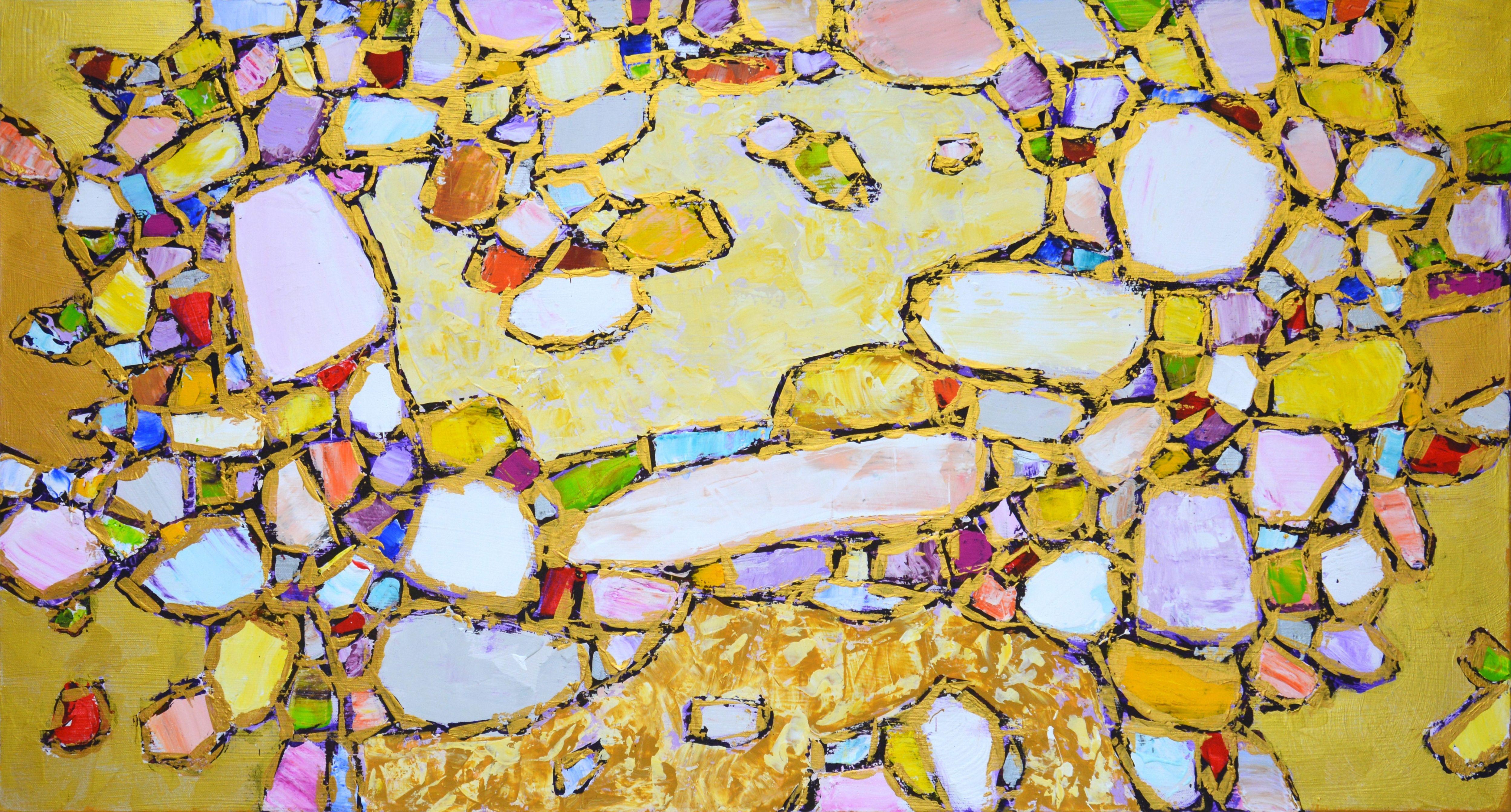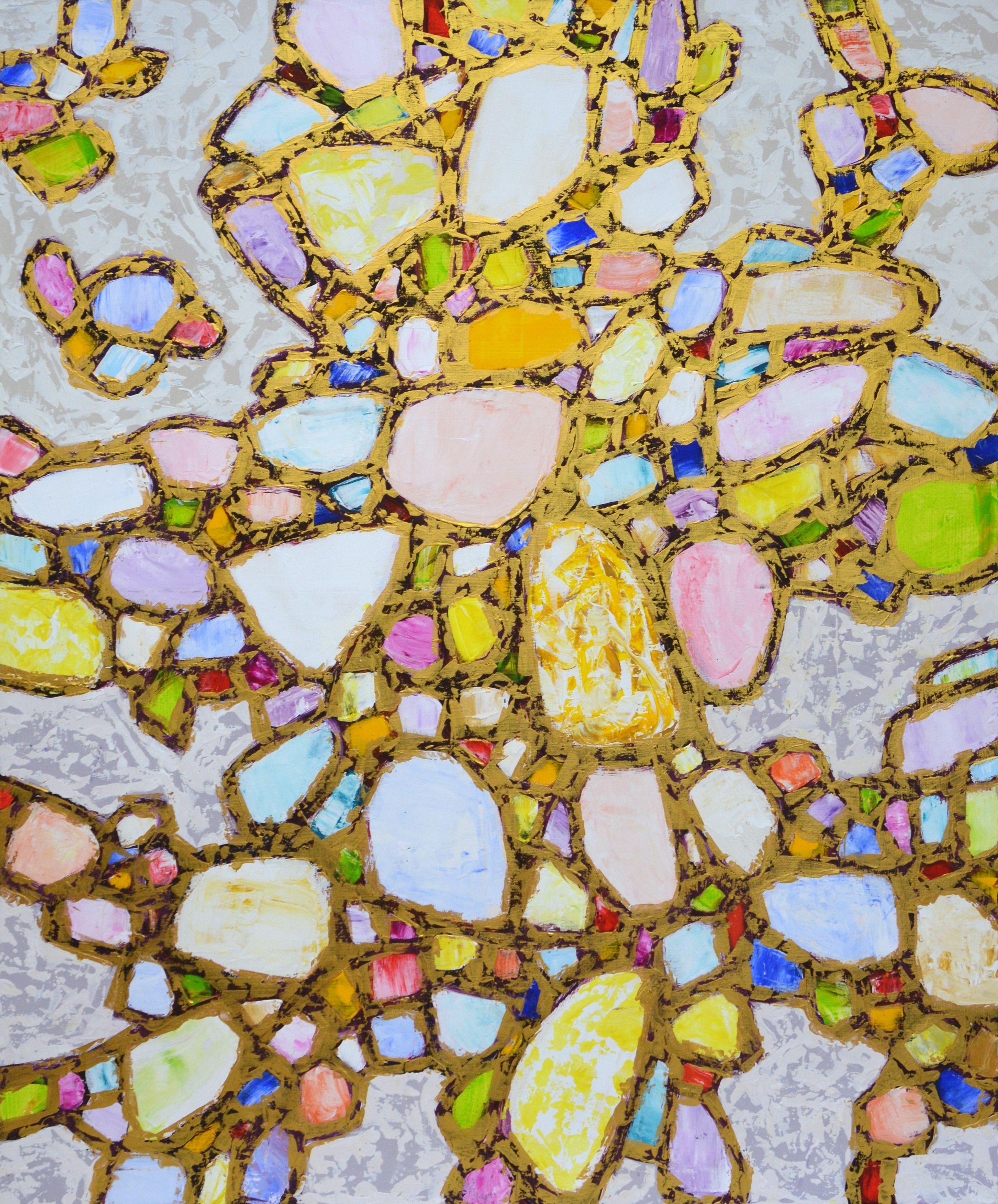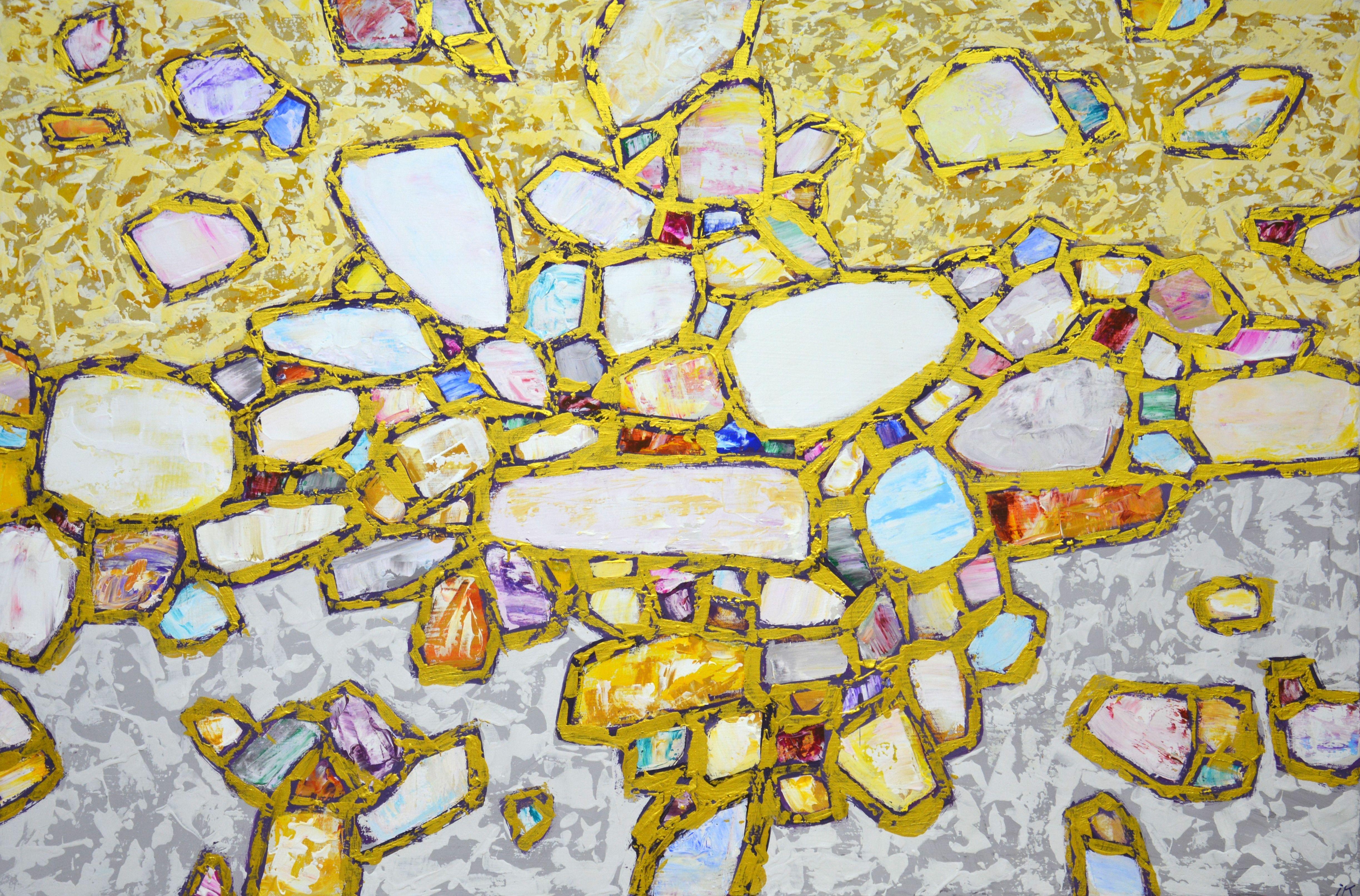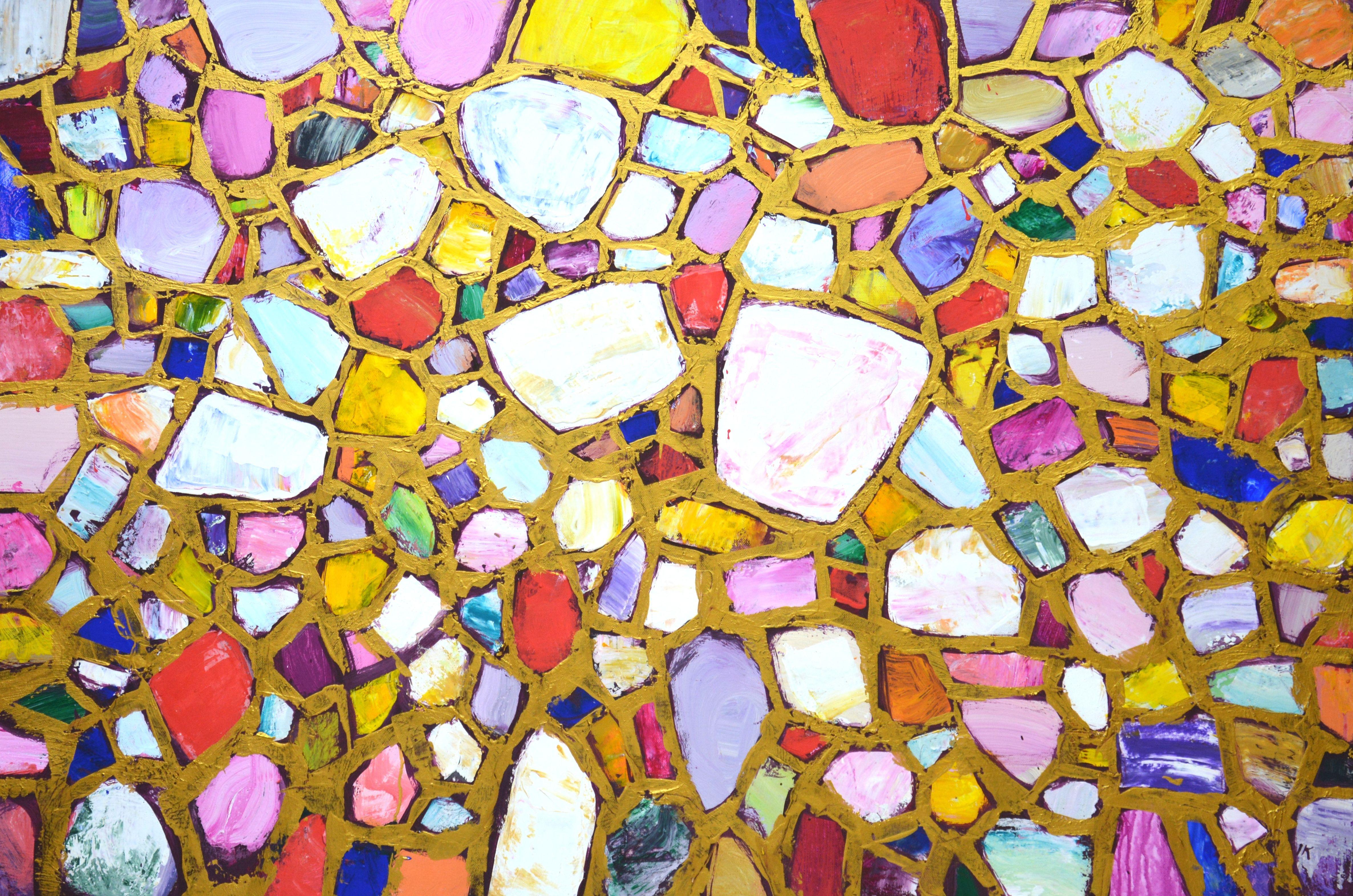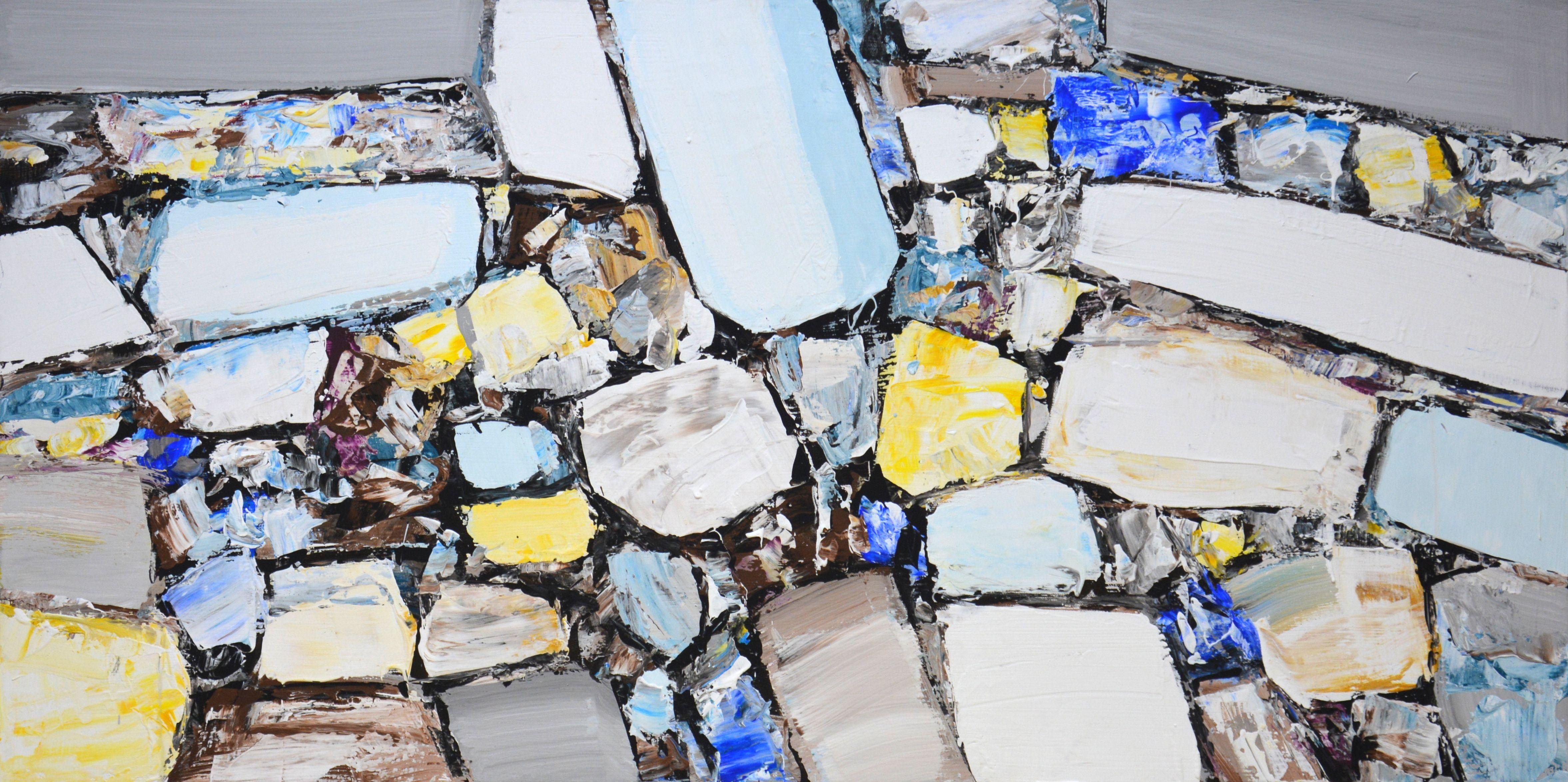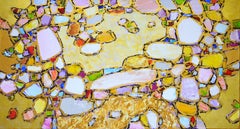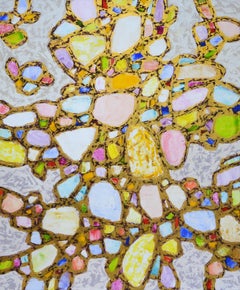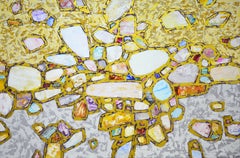Items Similar to Gems. Gold 2 – Luxury Abstract Acrylic Painting
Want more images or videos?
Request additional images or videos from the seller
1 of 16
Iryna KastsovaGems. Gold 2 – Luxury Abstract Acrylic Painting2022
2022
$1,980
£1,492.93
€1,720.39
CA$2,746.80
A$3,077.77
CHF 1,602.10
MX$37,651.77
NOK 20,335.65
SEK 19,206.77
DKK 12,843.08
Shipping
Retrieving quote...The 1stDibs Promise:
Authenticity Guarantee,
Money-Back Guarantee,
24-Hour Cancellation
About the Item
"Gems. Gold 2” – Luxury Abstract Acrylic Painting (100x60 cm)
Description:
Add a touch of luxury and elegance to your space with “Precious Gems. Gold”, a mesmerizing hand-painted abstract artwork inspired by the brilliance of gemstones and the richness of gold. This unique 100x60 cm acrylic painting features an intricate mosaic of jewel-like shapes in vibrant hues, highlighted with golden accents that create a stunning interplay of light and depth.
✨ Handmade & Original – One-of-a-kind acrylic on canvas
🎨 Rich Color Palette – Gold, emerald, sapphire, amethyst, and diamond-like reflections
🖼 Perfect Size (100x60 cm) – Ideal for modern and contemporary interiors
🏡 Fits Various Spaces – Perfect for living rooms, offices, luxury interiors, and upscale decor
🎁 Great Gift Idea – A statement piece for art collectors and design lovers
📦 Shipping: Secure packaging with worldwide delivery with the signed certificate of authenticity.
Bring sophistication and brilliance to your decor with this exclusive abstract painting inspired by precious stones and golden elegance!
- Creator:Iryna Kastsova (1976)
- Creation Year:2022
- Dimensions:Height: 23.63 in (60 cm)Width: 39.38 in (100 cm)Depth: 0.79 in (2 cm)
- Medium:
- Movement & Style:
- Period:
- Condition:
- Gallery Location:Zofingen, CH
- Reference Number:1stDibs: LU2203215995742
Iryna Kastsova
Iryna Kastsova is a professional painter who has exhibited nationally and internationally. Her pieces have been shown in Minsk's Palace of Arts and the Museum of Modern Fine Art (Minsk). Kastsova’s abundant florals and vibrant seascapes are a mélange between impressionism, realism, and expressionism. Her method lies in spontaneous creation primarily using oil on canvas. Kastsova's artworks are very popular among international art collectors. Her beautiful seascapes, abstractions, and portraits found their new homes and art collectors worldwide!
« I do not sketch. A picture appears in my head, then I quickly throw it onto canvas using a spatula and brushes. »
About the Seller
5.0
Platinum Seller
Premium sellers with a 4.7+ rating and 24-hour response times
Established in 2019
1stDibs seller since 2022
569 sales on 1stDibs
Typical response time: 4 hours
- ShippingRetrieving quote...Shipping from: Minsk, Belarus
- Return Policy
Authenticity Guarantee
In the unlikely event there’s an issue with an item’s authenticity, contact us within 1 year for a full refund. DetailsMoney-Back Guarantee
If your item is not as described, is damaged in transit, or does not arrive, contact us within 7 days for a full refund. Details24-Hour Cancellation
You have a 24-hour grace period in which to reconsider your purchase, with no questions asked.Vetted Professional Sellers
Our world-class sellers must adhere to strict standards for service and quality, maintaining the integrity of our listings.Price-Match Guarantee
If you find that a seller listed the same item for a lower price elsewhere, we’ll match it.Trusted Global Delivery
Our best-in-class carrier network provides specialized shipping options worldwide, including custom delivery.More From This Seller
View AllAbstraction 106. Original Acrylic Painting
By Iryna Kastsova
Located in Zofingen, AG
Abstraction 106. Modernist abstract painting with overlapping geometric shapes in a vibrant palette of red, yellow, orange, white.
The painting has a delicate balance between an ord...
Category
2010s Abstract Interior Paintings
Materials
Acrylic
Expression with gold.
By Iryna Kastsova
Located in Zofingen, AG
Expression with gold - Expressive Abstract Acrylic Painting (60x80 cm)
Dive into a joyful explosion of color with Color Echoes, a bold and energetic abstract painting that radiates ...
Category
2010s Abstract Interior Paintings
Materials
Acrylic
Modern 5. Original Abstract Acrylic Painting
By Iryna Kastsova
Located in Zofingen, AG
Modern 5. Modern, abstract painting, made in a bright, brutal palette. The product has a modern aesthetic design. A delicate balance between an ordered geometric structure and a free...
Category
2010s Abstract Interior Paintings
Materials
Acrylic
Abstraction 116. Large Abstract Acrylic Painting – Modern Geometric Wall Art
By Iryna Kastsova
Located in Zofingen, AG
Large Abstract Acrylic Painting – Modern Geometric Wall Art (80x120 cm)
Description:
Elevate your interior with this stunning abstract acrylic painting, a perfect blend of modern el...
Category
2010s Abstract Interior Paintings
Materials
Acrylic
Minimalism 39 Large Abstract Modern Painting
By Iryna Kastsova
Located in Zofingen, AG
Minimalism 39. A modern abstract painting created with drops and splashes of paint that sparkles and shimmers! The colors overlap each other and also match with different stains. Man...
Category
2010s Abstract Expressionist Interior Paintings
Materials
Acrylic
Magic 6 Contemporary Abstract Acrylic Painting
By Iryna Kastsova
Located in Zofingen, AG
Magic 6. It is very important to remember that there is magic in each of us. A modern, abstract, expressive, sophisticated painting that fits into a modern interior. The work was cre...
Category
2010s Abstract Expressionist Interior Paintings
Materials
Acrylic
You May Also Like
Gems and gold 3., Painting, Acrylic on Canvas
By Iryna Kastsova
Located in Yardley, PA
Gems and gold 3. Abstract dynamic composition, filled with light, filled with air, using gold paint. Curved lines, shapes, texture, texture made with a palette knife add expressivene...
Category
2010s Abstract Abstract Paintings
Materials
Acrylic
Gems in Gold 2., Painting, Acrylic on Canvas
By Iryna Kastsova
Located in Yardley, PA
Gems in Gold 2. Abstract dynamic composition, filled with light, filled with air, using gold paint. Curved lines, shapes, texture, texture made with a palette knife add expressivenes...
Category
2010s Abstract Abstract Paintings
Materials
Acrylic
The secret of gold., Painting, Acrylic on Canvas
By Iryna Kastsova
Located in Yardley, PA
The secret of gold. Abstract dynamic composition, filled with light, filled with air, using gold paint. Curved lines, oval shapes, palette knife texture add expressiveness to the sur...
Category
2010s Abstract Abstract Paintings
Materials
Acrylic
Stones in gold., Painting, Acrylic on Canvas
By Iryna Kastsova
Located in Yardley, PA
Stones in gold. Abstract, modern, dynamic composition, precious stones in a gold frame, symbolizing wealth and abundance, using gold paint. Curved lines, shapes, texture, texture, ma...
Category
2010s Abstract Abstract Paintings
Materials
Acrylic
Stones in gold 3., Painting, Acrylic on Canvas
By Iryna Kastsova
Located in Yardley, PA
Stones in gold 3. Abstract dynamic composition filled with light, air, joyful emotions. Modern. Art Deco. Expression. Precious stones, painted in bright colors, in abstract forms on ...
Category
2010s Abstract Abstract Paintings
Materials
Acrylic
Abstraction 99., Painting, Acrylic on Canvas
By Iryna Kastsova
Located in Yardley, PA
Abstraction 99. This is a modern unique acrylic abstraction that can become an accent in any modern interior. Lines, shapes, texture give the surface movement. The details balance ea...
Category
2010s Abstract Abstract Paintings
Materials
Acrylic
